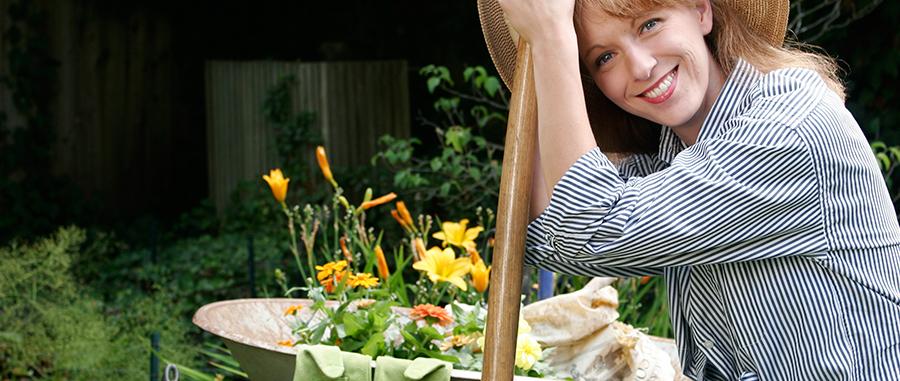Longer, warmer days mean more time outdoors – and more time in the yard and garden raking, lifting, digging, hauling, spreading, pushing, and so on. Whether you consider this work enjoyable or intolerable, Bend physical therapist Scott Weber has a message for all who partake in gardening and landscaping this spring: watch your back.
“When gardening and working in the yard, the majority of your movement takes place in a forward or bent position, which places increased stress on the posterior structures of your spine and over time, can lead to lower-back pain.” said Weber, co-owner of Alpine Physical Therapy in Bend. “Specifically, it’s the duration or repetition of bending, twisting and lifting that can increase your risk of injury or aggravate a prior history of symptoms.”
Gardening and yard work remain one of the most popular outdoor activities in the U.S. – a $36.9 billion industry, according to Garden Research, formerly the National Garden Association. Garden Research estimates that around 74 percent of all U.S. households participated in lawn and garden activities in 2016.
To maximize the joy of gardening and yard work – or to make the activity more bearable – Weber offers the following tips for avoiding back pain and injury while working up a sweat:
Warm Up & Stretch: Think of this work as a physical activity, not a leisurely hobby. As such, warming up is helpful. Specific areas to target are the back, neck and hips. A brief walk prior to activity can help to normalize spinal mechanics and increase circulation to the muscles.
Start Slow: Don’t tackle the tough jobs first. Weber suggests warming up your body and building stamina by starting with simpler projects and breaking larger projects into shorter work or gardening sessions.
Take Breaks: While in the yard or garden, take frequent breaks to walk around, hydrate and stretch. “To reduce pressure to the lower back place your hands on your hips and bend backwards within comfort or if you’ve been working on your hands and knees perform some reps of the “cat/cow” yoga stretch.” Weber said. “Frequency is dependent on how one feels, but it is important to be proactive to any symptoms versus reactive.”
Garden on Hands & Knees: When working close to the ground, positioning on your hands and knees is recommended. Better than bending at the waist, this gardening position places the least pressure on the spine. Alternatives are kneeling or working from a seated position.
Practice Mindful Lifting: When lifting bags of fertilizer or heavy potted plants, always bend with the knees and lift with your legs, keeping the bulk of the weight close to your body.
Buy & Use Quality Tools: According to Weber, the use of quality, long-handled gardening tools can reduce your need to bend at the waist. And, try not to lift and carry heavy items if you have a wheelbarrow or garden cart available to help.
Listen to Your Body: If you begin to feel discomfort or pain in your spine, take a break, change tasks, or stop your task altogether. “Walk, stretch and rest your back,” Weber said. “If pain or discomfort persists, contact your physical therapist directly for a personal assessment of the back and spine.”
